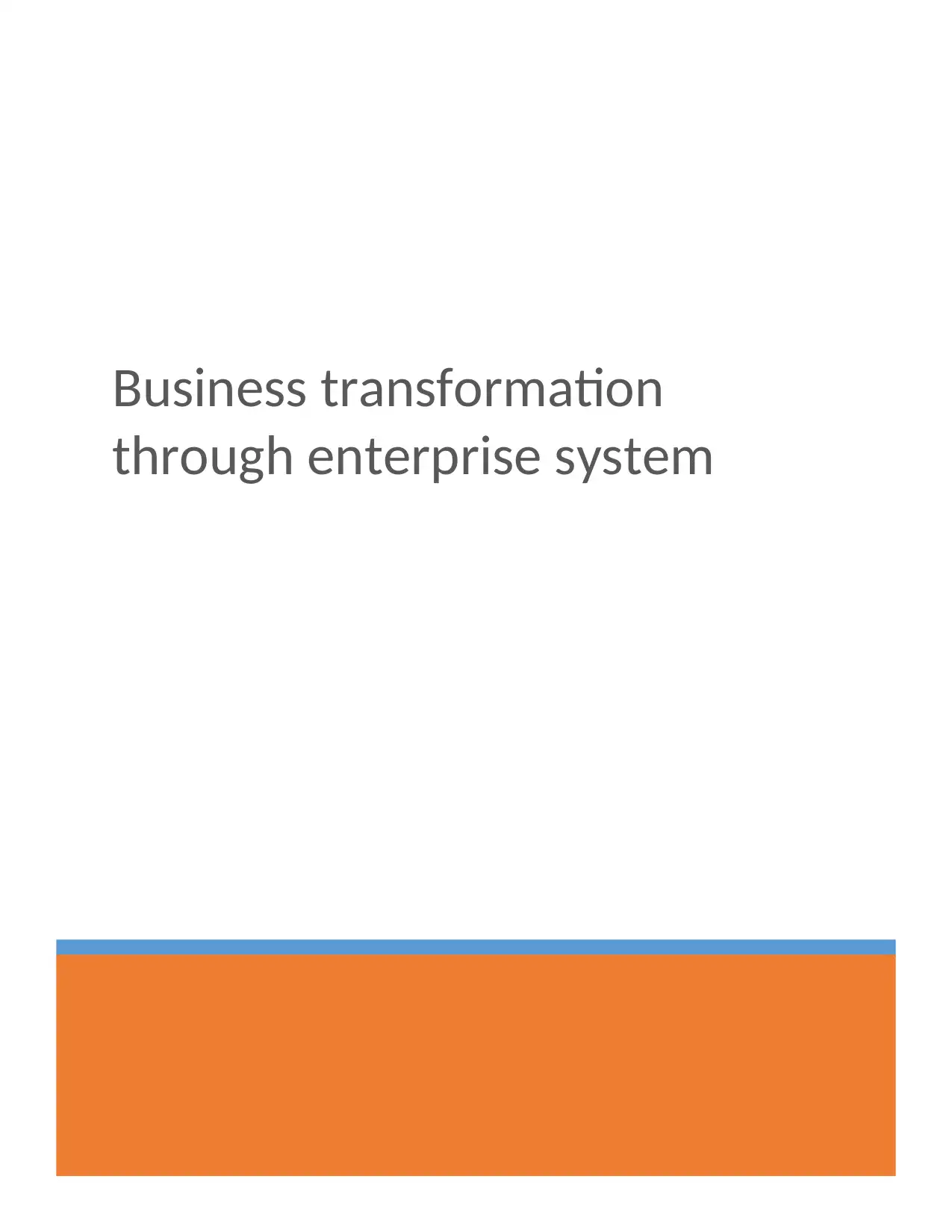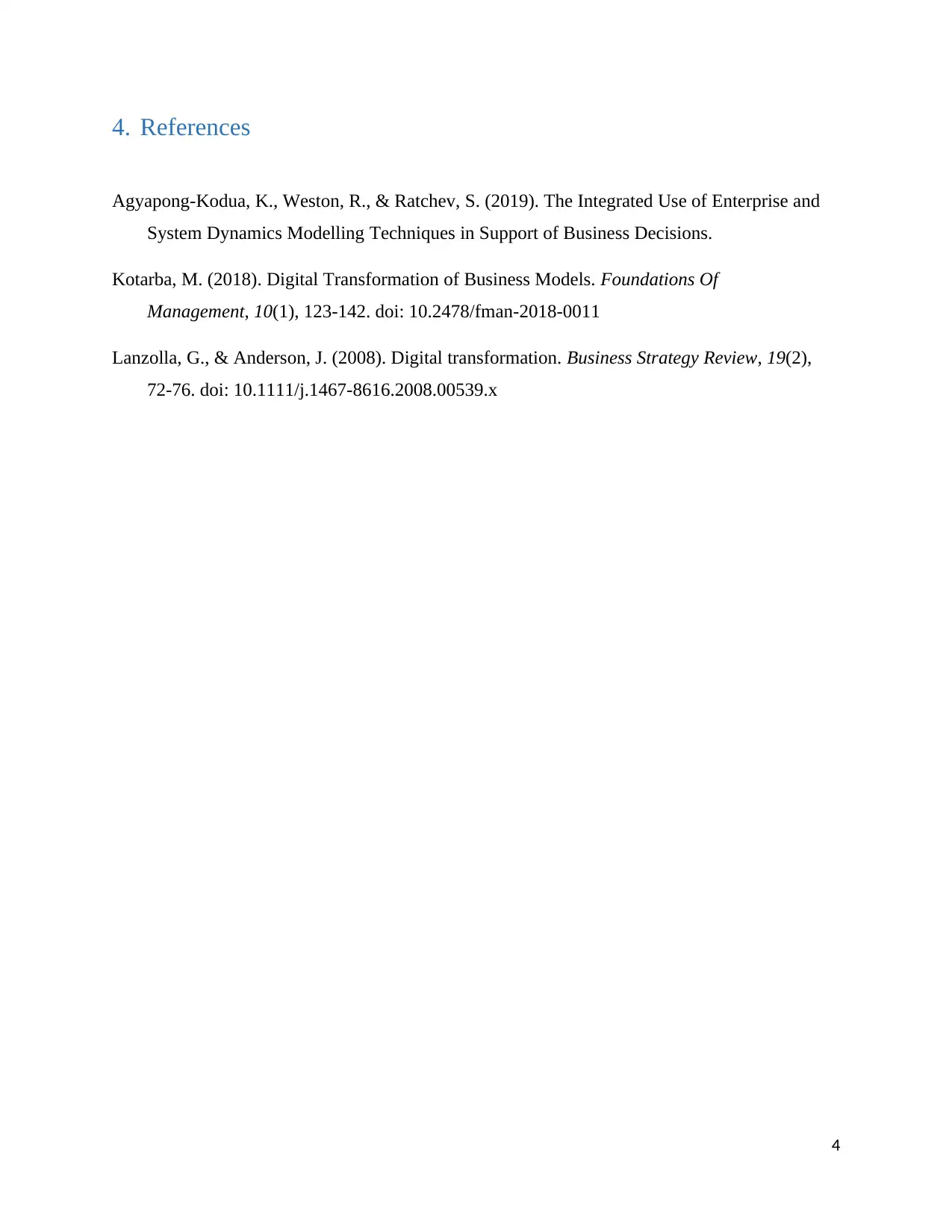Business Transformation Through Enterprise System Analysis Report
VerifiedAdded on 2023/03/30
|5
|893
|315
Report
AI Summary
This report provides an overview of technology deployment and the utilization of IT systems in business sectors, focusing on digital transformation. It summarizes key findings from three articles discussing the redefinition of business processes through enterprise modeling and system dynamics. The report highlights the creation of a new model that analyzes and manages complexities in production systems, incorporating enterprise modeling, continuous simulation, and causal loop techniques. It emphasizes the importance of integrating Enterprise Modeling (EM) and System Dynamics (SD) to assess performance indicators and leverage data for better decision-making, including the use of enterprise systems for data centralization and cost reduction. The report also examines the Product Service System (PSS) model, its implementation, and its role in transitioning existing systems, particularly within the automotive industry, providing a framework for successful model transitions and business process improvements. The report focuses on the interaction of the system, and creation of a newer model for a business process to reduce the complexities of the issues of the management in a dynamic production system. It can be used to find the performance of the organization. To manage the data of the organization, the centralization of data to integrate the information system will be performed. It will help to reduce the cost and the employee usage of the organization. Tailored enterprise system will improve the potential of the organization. The PSS model will be mostly used to manage the product system of the organization. It can be used in the automotive enterprise systems. The main focus of PSS is to understand the business model and provide the framework for process.
1 out of 5












![[object Object]](/_next/static/media/star-bottom.7253800d.svg)